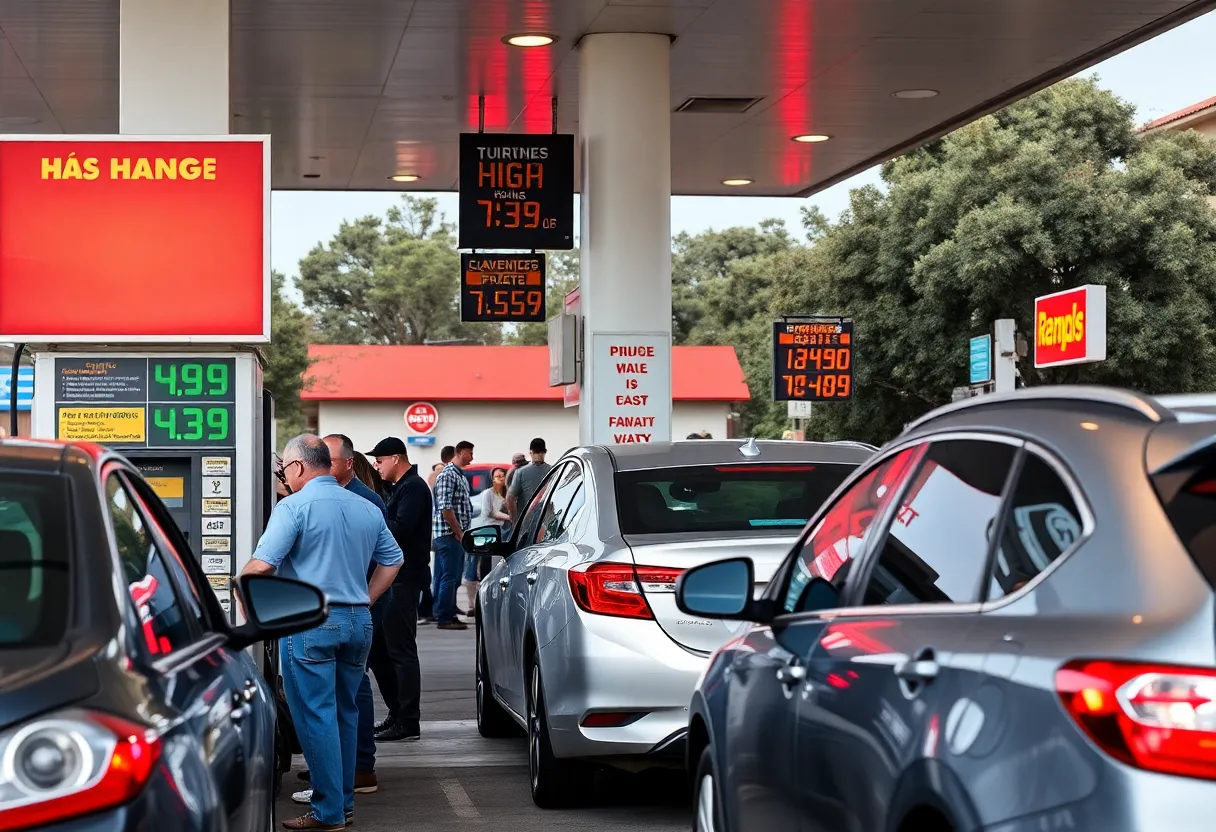News Summary
California is bracing for a gas crisis as two major oil refineries—Valero Benicia and Phillips 66—announce closures that could decrease gas supply by 20%. Lawmakers and experts express concern over rising gas prices, which could potentially exceed $8 per gallon in the coming year. The closures come amidst a strict regulatory environment for oil companies and an increasing reliance on oil imports. With Governor Newsom aiming to phase out gas-powered cars by 2035, the situation raises urgent questions about future energy policies and consumer impacts.
California Faces Gas Crisis as Major Refineries Announce Closures
California lawmakers are expressing deep concern over a potential gas crisis following the announcement of planned closures by two major oil refineries. The Valero Benicia Refinery located in the Bay Area is set to shut down in April 2026, while the Phillips 66 refinery in Southern California is expected to cease operations within the next year. These closures could lead to a significant reduction in the state’s gas supply, estimated at 20%.
Current gas prices across California have already begun to skyrocket, with areas such as Walnut Creek reporting prices just under $5 per gallon. Some drivers are seeing bills over $100 when refueling their vehicles, raising alarm among officials and consumers alike. This development comes as state officials, including Democratic Assemblymember Connie Petrie-Norris, question the necessity of these refinery closures, especially in light of high profits reported by the companies.
Expert Opinions on Gas Prices
Experts are warning of an inevitable increase in gas prices should both refineries proceed with their closure plans. UC Berkeley economist Severin Borenstein has highlighted concerns about an “abrupt increase” in fuel prices, while a report from USC estimates that gas prices across the state could soar by 75%, potentially exceeding $8 per gallon by next year. Both Valero and Phillips 66 account for nearly 18% of California’s crude oil refining capacity, prompting fears regarding the stability of the state’s gas supply.
Factors Influencing Supply and Demand
As gas consumption in California appears to be declining, the rate at which refinery capacity is being reduced may outpace this drop in demand. The state’s strict regulatory environment for oil companies is among the most stringent in North America, as noted by Valero’s CEO. Furthermore, California has been heavily reliant on oil imports, sourcing 63.5% of its oil supply from outside the state as of 2024. This heavy reliance adds another layer of complexity to the state’s emerging fuel issues.
Legislative Efforts and Future Goals
In light of these developments, Governor Gavin Newsom has established an ambitious goal to phase out gas-powered cars in California by 2035. This initiative is aimed at reducing emissions, although political factors at the federal level may pose challenges to this objective. In response to skyrocketing fuel prices, new legislation has been implemented to monitor gas prices and prevent potential price gouging practices by retailers.
Future Expectations and Strategies
Following the announcements regarding the refinery closures, Governor Newsom is urging for closer cooperation between the state and oil refiners to ensure a stable gas supply for the residents of California. While there are some predictions of temporary price relief during the summer driving season, longer-term forecasts remain bleak, with experts warning that Californians could soon be facing even higher fuel prices.
As the situation evolves, it is clear that the state’s gas supply, prices, and overall economy could be significantly impacted by these refinery closures, raising urgent questions about future energy policies and consumer consequences.
Deeper Dive: News & Info About This Topic
- Kron4: Gas Prices Could Soar With Refineries Closing in California
- CBS News: California Gas Prices Could Surge With More Oil Refineries Closing
- Mercury News: Will California’s High Gas Prices Go Even Higher?
- Newsweek: California Gas Prices Concerns
- Wikipedia: Gasoline Prices in the United States

Author: STAFF HERE BEVERLY HILLS WRITER
The Beverly Hills Staff Writer represents the experienced team at HEREBeverlyHills.com, your go-to source for actionable local news and information in Beverly Hills, Los Angeles County, and beyond. Specializing in "news you can use," we cover essential topics like product reviews for personal and business needs, local business directories, politics, real estate trends, neighborhood insights, and state news affecting the area—with deep expertise drawn from years of dedicated reporting and strong community input, including local press releases and business updates. We deliver top reporting on high-value events such as the Rodeo Drive Concours d'Elegance, the Beverly Hills artSHOW, Concerts on Canon, and holiday celebrations throughout the city. Our coverage extends to key organizations like the Beverly Hills Chamber of Commerce and Visit Beverly Hills, plus leading businesses in luxury fashion, hospitality, and entertainment that drive the local economy. As part of the broader HERE network, including HERELosAngeles.com, HERESantaAna.com, HEREHuntingtonBeach.com, and HERECostaMesa.com, we provide comprehensive, credible insights into Southern California's dynamic landscape.




